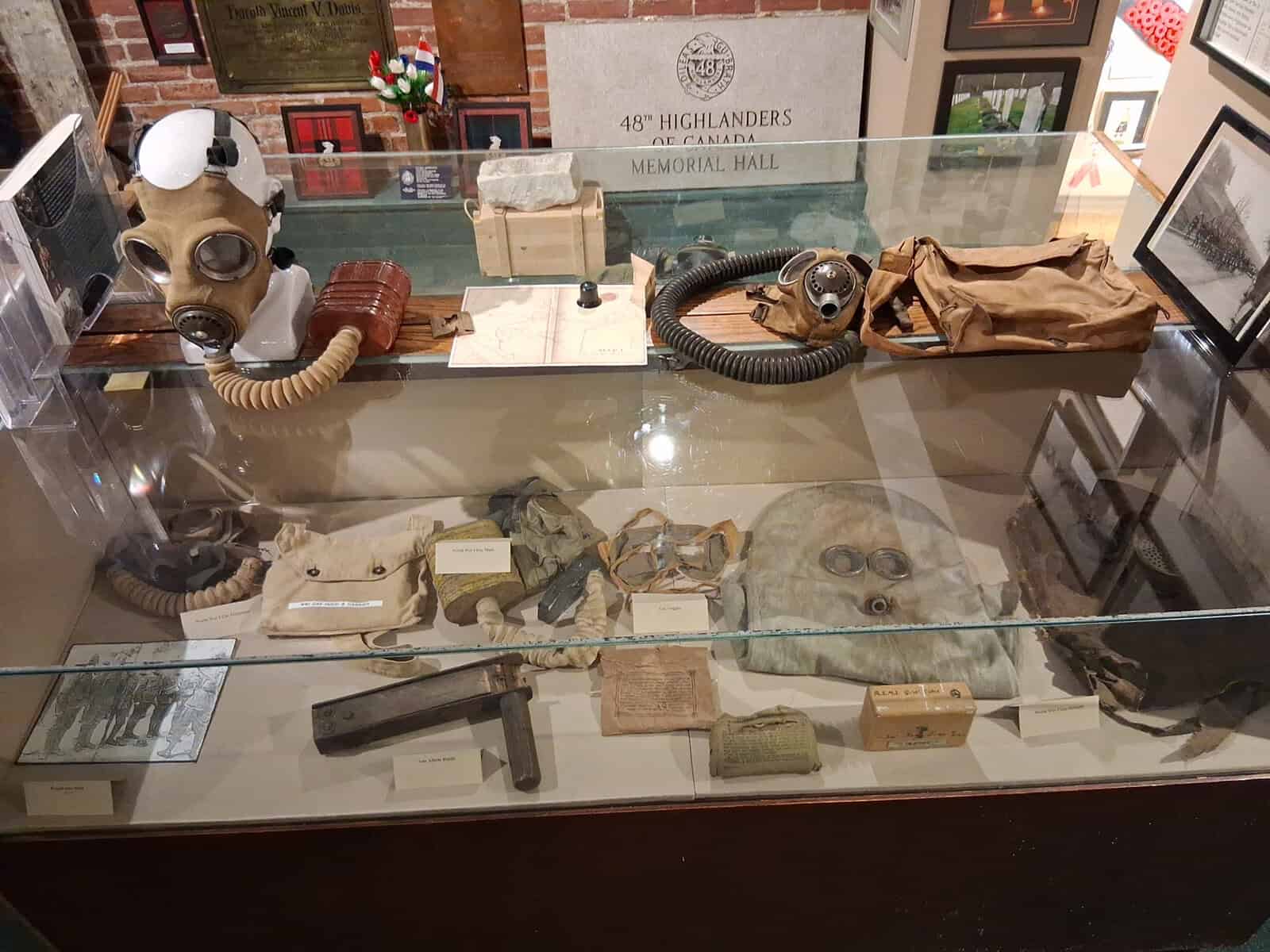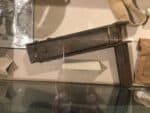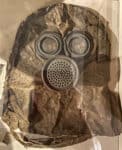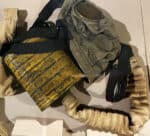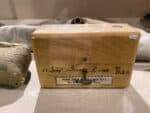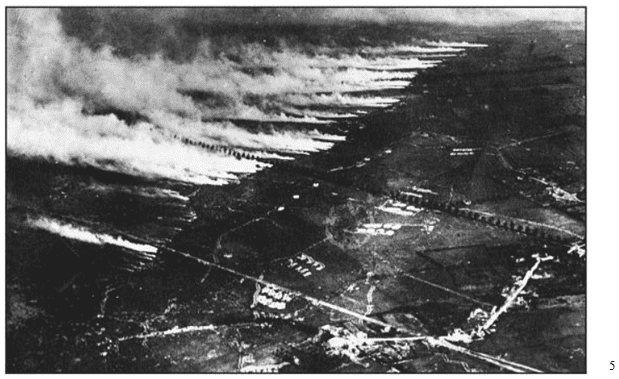Gas masks
During the First World War, gas warfare emerged as a terrifying new threat, prompting rapid development of protective equipment such as gas masks. The 48th Highlanders of Canada, serving overseas as the 15th Battalion, Canadian Expeditionary Force, were at the very apex of the first large-scale gas attack against the British line.
On April 22, 1915, during the Second Battle of Ypres, the Germans released a dense green-yellow cloud of chlorine gas . Two days later they repeated this atrocity near Gravenstafel Ridge. The 15th Battalion was holding part of the front line and suffered heavily in the ensuing chaos. With no effective issued protection, the men were forced to improvise by pressing urine-soaked cloths over their mouths and noses, as the ammonia helped neutralize the chlorine.
In response to this unprecedented horror, the British quickly developed rudimentary protective equipment. The first of these, the Hypo Helmet, appeared within weeks. It was a chemically treated flannel bag pulled over the head, offering minimal protection and making it hard to see or breathe. The P Helmet followed by mid-1915, offering some improvement, and then the PH Helmet, treated to resist both chlorine and phosgene gases.
By early 1916, the more effective Small Box Respirator entered service. This featured a mouthpiece connected by hose to a filter canister worn in a haversack on the chest and separate goggles for vision. It became the standard issue mask until the end of the war.
For the 15th Battalion, whose first experience of gas had been so deadly, the arrival of proper respirators and systematic gas training was crucial. Gas discipline became second nature, as even a moment’s delay in donning the respirator could be fatal in the shifting clouds of industrial warfare.
Hand grenades
Hand grenades have played a crucial role in modern warfare, and Canadian soldiers employed a variety of types in both the First and Second World Wars.
In the early stages of the First World War, grenades were often improvised. Canadian troops sometimes used jam tins packed with explosives and nails, known as “jam tin bombs.” As trench warfare evolved, purpose-built grenades became essential tools.
The British Mills Bomb, introduced in 1915, soon became the standard issue grenade for Commonwealth forces, including Canadians. Officially designated the No. 5 grenade, the Mills Bomb featured a segmented cast-iron body that aided fragmentation. It was a time-fused grenade ignited by pulling a pin and releasing a lever (“spoon”), giving the thrower about four seconds before detonation. Canadian soldiers used these extensively during trench raids and assaults, particularly at battles like Vimy Ridge and Passchendaele.

